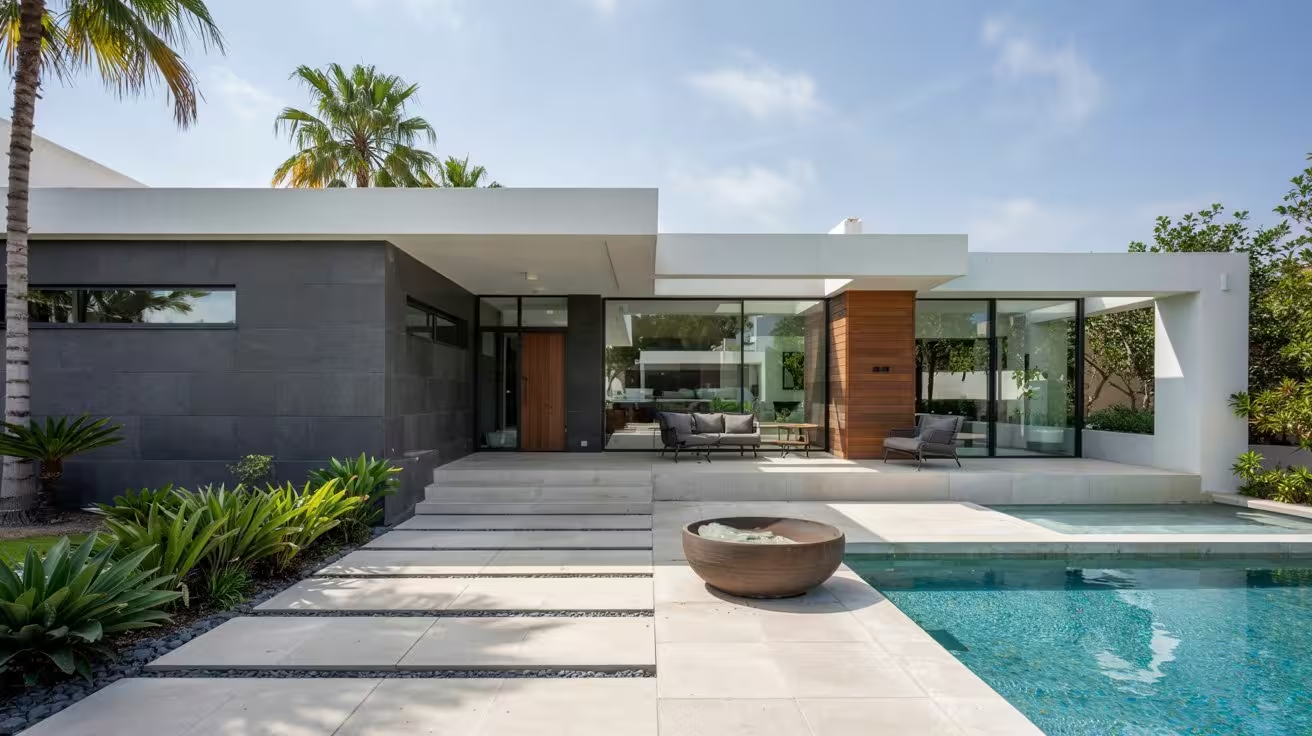Printed paving is not only a high-performance technical solution, but also an increasingly versatile design tool. Today, aesthetics play a key role in the choice of exterior finishes, and color has become the protagonist.
Trends in printed concrete colors are evolving at the pace of contemporary architecture, landscaping and urban design. If you are planning a project or renovation, take note: these are the shades that will set the tone for patios, driveways, gardens and public spaces in the coming years.
Natural ranges: sand, earth and stone.
Colors inspired by nature are consolidating as the most demanded. Shades such as sand beige, terracotta, stone gray or earth brown fit perfectly in outdoor environments, providing warmth, naturalness and harmony with the landscape.
Where do they work best?
- Gardens and green areas.
- Entrances to single-family homes.
- Rural or Mediterranean environments.
Aesthetic advantage: They conceal dirt and the passage of time better, and combine with any architectural style.
2. Modern grays: from pearl to anthracite
Gray continues to be one of the star colors in printed flooring, and now we see it in a wider range. From light pearl gray, ideal for modern homes, to anthracite gray, widely used in urban design or industrial architecture.
Perfect for:
- Houses with contemporary lines.
- Minimalist and modern spaces.
- Public or urban areas.
Pro tip: Play with contrasting light and dark tones to mark passing areas or create dynamic visual effects.
3. Dark colors with metallic shades
Dark tones with subtle reflections in graphite, copper or even steel blue are gaining prominence. These are bold, sophisticated options with great personality.
Typical applications:
- Design swimming pools or terraces.
- High-impact main entrances.
- Stores or hospitality spaces.
Differential value: They transmit elegance and exclusivity. However, they require more careful maintenance in areas exposed to the sun.
4. Wood effect: warm and timeless
Thanks to new molds and colorants, more and more professionals are choosing to recreate the look of wood in printed concrete. Walnut, oak, beech or wenge tones are the most commonly used to achieve that rustic and cozy effect without the drawbacks of natural wood.
Key advantages:
- High resistance to humidity, sun and wear.
- Minimal maintenance.
- Perfect for terraces, porches or decorative paths.
Extra SEO: If you are looking for an alternative to outdoor decking, wood-effect printed concrete is one of the most fashionable and functional options.
5. Bicolor and gradients: creativity to power
A growing trend is to combine two or more tones to generate gradient, shading or contrasting effects. This allows maximum customization of the pavement finish and adapting it to the environment.
Popular examples:
- Combination of light and dark gray for accesses and edges.
- Earth tones with golden or reddish shades in gardens.
- Aged” effect with release agents that create reliefs with shadows.
Important: The correct application of the release agent is key to achieve these effects with realism and quality.
Conclusion
The color of printed concrete is no longer just a technical choice: it is a style statement. From neutral tones that mimic stone to bolder colors with metallic or wood effect finishes, today you can create a floor that combines design, functionality and personality.
Are you thinking of renovating your pavement?
In Pavicret we advise you on the most current color combinations and we offer you the right products to achieve a professional finish.

